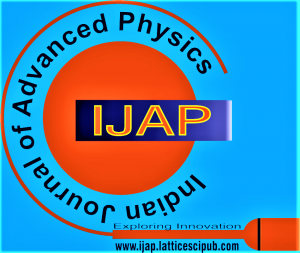![]()
Theoretical Investigation of Gravitational Effect on Effective Mass of Electromagnetic Wave
Chandra Bahadur Khadka
Chandra Bahadur Khadka, Department of Physics, Tri-Chandra Multiple Campus, Tribhuvan University, Kathmandu-44600, Nepal.
Manuscript received on 07 July 2024 | Revised Manuscript received on 21 September 2024 | Manuscript Accepted on 15 October 2024 | Manuscript published on 30 October 2024 | PP: 27-33 | Volume-4 Issue-2, October 2024 | Retrieval Number: 100.1/ijap.A105605010425 | DOI: 10.54105/ijap.B1054.04021024
Open Access | Editorial and Publishing Policies | Cite | Zenodo | OJS | Indexing and Abstracting
© The Authors. Published by Lattice Science Publication (LSP). This is an open-access article under the CC-BY-NC-ND license (http://creativecommons.org/licenses/by-nc-nd/4.0/)
Abstract: This paper proposes that the effective mass of an electromagnetic wave is not zero and further points out that an electromagnetic wave undergoes a frequency shift in a gravitational field only if its effective mass varies with gravity. Based on proposed model, mass of an electromagnetic wave of frequency 𝑓 is given by formula 𝑚 = 7.36×10−51𝑓. This new understanding can be helpful for the analysis of mass, linear momentum, force, frequency, wavelength and energy of electromagnetic waves inside the gravitational field namely at Schwarzschild radius, black hole and so on. A key point of this work is that the gravitational redshift effect can be explained more directly based on the variation of the proposed mass of the electromagnetic wave inside the gravitational field.
Keywords: Theoretical Cosmology, Gravitational Redshift, Theory of Relativity, Schwarzschild Radius.
Scope of the Article: Materials Physics
